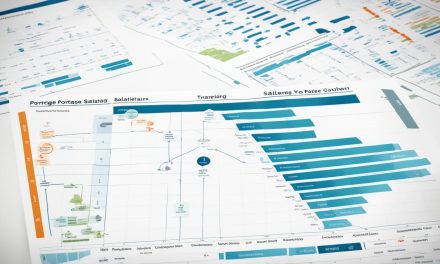Did you know 62% of independent professionals leave money on the table by using the same billing method for every project? Your ability to adapt your approach directly impacts what you earn. Unlike traditional jobs, freelancing lets you craft solutions that work for both your clients and your bank account.
There’s no universal answer when determining how to charge. A client needing ongoing support might require hourly billing, while a well-defined project could justify fixed rates. The secret lies in matching your method to the work’s complexity and the client’s expectations.
Smart professionals treat billing as a strategic tool. They analyze each engagement’s scope, timeline, and potential value before proposing terms. This flexibility helps maintain fair compensation while building trust through transparency.
Table of Contents
Key Takeaways
- Tailored billing approaches boost earnings more than rigid pricing models
- Project clarity determines whether hourly or fixed rates work best
- Combining multiple methods establishes professional credibility
- Strategic adjustments help scale your independent business sustainably
- Proper billing turns unpredictable work into stable income streams
Introduction to Effective Freelance Pricing
What separates thriving independent professionals from those struggling to grow? Your approach to setting fair yet profitable terms shapes every aspect of your business. It determines who hires you, how you manage workloads, and whether your career evolves sustainably.
Understanding the Importance of Pricing
Newcomers often undercharge, while seasoned experts risk overcomplicating their structure. Regional differences amplify this challenge—a designer in Paris might charge €75/hour, while similar work in Dakar averages €15. These gaps don’t reflect skill levels but highlight how local economies influence client budgets.
Project variables create another layer. A website build with clear specifications allows confident flat fees. But creative campaigns requiring constant adjustments? They demand flexible billing to account for revisions. Your rates must balance expertise with market realities.
How Pricing Impacts Your Income
Every quote sends signals. Charge too low, and clients question your capabilities. Too high without justification? You’ll lose bids. Strategic adjustments based on project scope help maintain profitability while attracting serious partners.
Consider this: 43% of clients pay premium rates for specialists who articulate their value clearly. Your numbers should reflect not just hours worked, but solutions delivered. This mindset shift turns transactional jobs into long-term collaborations.
Understanding Pricing Strategies for Freelancers
Choosing how to charge clients remains one of the most critical decisions in self-employment. Six core methods shape modern engagements, each suited to different work scenarios and partnership dynamics.
Time-Based Models: Flexibility vs. Limits
Hourly billing works well for uncertain projects but caps earnings at available hours. Many French professionals charge €50-150/hour depending on specialty. Daily rates (€400-800) simplify tracking for multi-phase work, while weekly packages (€2,000-4,000) shift focus to deliverables over clock-watching.
Outcome-Focused Solutions
Fixed fees require clear scope definitions but reward efficient work. Value-based arrangements prove ideal when your contribution directly impacts client revenue. A social media campaign costing €8,000 might justify €25,000 if it generates €200,000 in sales.
| Method | Best For | Client Benefit | Earning Potential |
|---|---|---|---|
| Hourly | Unpredictable tasks | Pay-as-you-go | Limited by hours |
| Daily | Multi-phase work | Simplified tracking | Moderate |
| Fixed Fee | Defined projects | Budget certainty | Efficiency rewards |
| Value-Based | Revenue-impact work | Shared success | Uncapped |
Regional factors matter. Paris-based developers often charge 40% more than counterparts in Lyon for similar work. Always align your approach with both project needs and local market standards.
Crafting Your Service Offerings and Value Proposition

Specialized expertise sells better than general skills. Think of Parisian perfumeries or organic grocers—their focus allows premium price points. Your services thrive under the same principle.
Identifying Your Niche and Expertise
Clients pay more for targeted solutions. A developer specializing in e-commerce websites often earns 30% more than generalists. Start by answering: What unique problems do you solve better than others?
« Specialization turns your work into a destination, not just an option. »
Productizing Your Creative Services
Structure your offerings like car manufacturers: 90% standardized, 10% customizable. This approach speeds up work while letting clients feel heard. See how it compares:
| Service Model | Scope Clarity | Client Input | Delivery Time |
|---|---|---|---|
| Fully Custom | Low | High | 4-8 weeks |
| Productized | High | Predefined Options | 2-3 weeks |
| Specialized Package | Moderate | Limited Choices | 3-5 weeks |
This structure reduces revisions by 65% according to Lyon-based creatives. Clients appreciate knowing exactly what they’re buying—your business benefits from predictable workflows.
Tips for Getting Paid and Optimizing Payment Terms

Cash flow stability separates thriving independents from those chasing invoices. Smart payment structures benefit both parties—you get paid faster while clients gain predictability. Let’s explore proven methods refined through thousands of successful transactions.
Offering Discounts for Upfront Payment
Early payments improve your working capital. Try this retail-inspired approach: increase your base rate by 10%, then offer a matching discount for advance settlement. A €500 blog post becomes €550 with 10% off—€495 upfront. Clients perceive savings while you secure funds.
Alternative options work equally well. A 2% reduction for settling within ten days motivates prompt action. During slow seasons, offer existing partners special rates on pre-booked work. This maintains income while strengthening relationships.
| Incentive | Client Benefit | Your Advantage |
|---|---|---|
| 10% upfront | Perceived savings | Guaranteed funds |
| 2% quick-pay | Flexibility | Faster processing |
| Volume deals | Cost predictability | Repeat business |
Negotiating Payment Terms with Clients
Clear agreements prevent misunderstandings. Start by requiring 30-50% deposits before work begins. For ongoing collaborations, propose monthly billing cycles aligned with client pay schedules.
Always balance security with flexibility. A marketing consultant might accept three installments for a €5,000 campaign. Payment platforms like Wise or Revolut simplify international transfers while protecting both parties.
Remember: Your terms reflect professional standards. Enforce late fees consistently—4% interest after 30 days is common in France. Clients respect clear boundaries when communicated respectfully.
Implementing Strategies for Different Project Scenarios
Every project carries unique challenges that demand tailored financial approaches. A mobile app development might stall from missing API documentation, while website redesigns often expand beyond initial plans. Your billing framework must account for these variables while protecting your income.
Adapting Billing Methods to Project Scope
Clear project definitions enable confident fixed fees. For example, a Lyon-based designer charges €3,500 for brand guidelines with signed-off creative briefs. But when clients request « exploratory research, » switch to daily rates. This compensates for unpredictable hours while setting boundaries.
| Project Type | Scope Clarity | Recommended Method |
|---|---|---|
| Software Debugging | Low | Hourly + Milestones |
| Marketing Campaign | Medium | Weekly Packages |
| E-commerce Setup | High | Fixed Fee |
Managing Unforeseen Delays and Revisions
When client-side issues cause setbacks—like missing login credentials or server crashes—communicate impacts immediately. A Paris video editor renegotiated timelines using phased billing when raw footage arrived late. This maintained trust while securing partial payments.
« Anticipate three revision rounds in your initial quote. Beyond that, implement change orders at 65% of your standard rate. »
Build buffer days into timelines for technical hiccups. For international clients, specify responsibility for cross-border payment fees upfront. These precautions turn potential conflicts into demonstrations of professionalism.
Leveraging Tools to Track Time and Manage Billing
Efficient tools transform how independents handle billing. Without them, 78% of professionals lose track of billable hours annually. Modern solutions automate tracking while building client trust through transparency.
Utilizing Time-Tracking Software
Accurate records start with reliable software. Apps like Toggl or Harvest capture every minute spent on client work, from email exchanges to website edits. These tools generate reports showing how time aligns with project milestones.
| Tool | Key Features | Best For | Integrations |
|---|---|---|---|
| Toggl Track | One-click timers, project dashboards | Solo professionals | Asana, QuickBooks |
| Harvest | Expense tracking, invoicing | Teams | Slack, Trello |
| Clockify | Unlimited users, free tier | Startups | Zapier, GitHub |
Set rules early: Share tracking links with clients for real-time updates. This prevents disputes and demonstrates professionalism.
Effective Project Management Techniques
Combine time data with organizational systems. Platforms like ClickUp let you:
- Break projects into phases with deadlines
- Assign tasks to collaborators
- Share progress dashboards with stakeholders
« Automated timesheets cut billing errors by 92% compared to manual entries. »
Link your tools: Connect time trackers to invoicing software like FreshBooks. This creates seamless workflows from work completion to payment collection. Review weekly reports to spot inefficiencies—maybe certain website tasks take 30% longer than estimated.
Strategies to Enhance Client Relationships and Secure Repeat Business
Repeat clients contribute 70% of a freelancer’s income, yet many overlook retention tactics. Transform one-time jobs into ongoing partnerships by structuring deals that benefit both parties. Offer volume discounts with smart safeguards—charge $550 per blog post normally, but $500 each for five posts with the discount applied to the final deliverable.
Identify clients with recurring needs early. Position yourself as their go-to expert by delivering consistent quality and proposing follow-up opportunities. A Paris-based designer secured 18 months of work by including « future website updates » in their initial proposal.
Build loyalty through strategic incentives:
– Reserve preferred rates for clients committing to quarterly projects
– Create 6-month completion deadlines for multi-phase work
– Share referral bonuses that strengthen your professional network
Become a trusted advisor rather than just a service provider. Send monthly industry updates to past clients and flag relevant business opportunities. This approach keeps you top-of-mind while demonstrating ongoing value beyond individual projects.
FAQ
How do I choose between hourly rates and fixed project fees?
Consider the project’s complexity and scope. Hourly rates work best for uncertain timelines, while fixed fees align with well-defined deliverables. Always clarify revisions or scope changes in your contract to protect both parties.
Should I offer discounts for long-term clients?
Discounts can secure recurring work but set clear limits (e.g., 10% off for retainer agreements). Ensure the reduced rate still covers your costs and aligns with the client’s budget. Transparency builds trust without undervaluing your expertise.
What tools help track billable hours efficiently?
Apps like Toggl or Harvest automate time tracking and generate reports. Pair these with invoicing platforms like QuickBooks or FreshBooks to streamline billing cycles and reduce administrative tasks.
How do I handle clients who request endless revisions?
Define revision limits in your initial agreement (e.g., two rounds included). Charge extra for additional changes, and communicate this upfront. This sets boundaries while maintaining professionalism.
When should I raise my rates?
Increase rates annually or after gaining specialized certifications. Inform existing clients 60–90 days in advance, emphasizing added value like faster turnaround or expanded skills. New clients pay the updated rate immediately.
Is value-based pricing realistic for beginners?
Yes, but start with smaller projects to demonstrate results. For example, charge based on a client’s revenue increase from your website redesign. Gradually shift to this model as you build case studies and confidence.
How can I avoid late payments?
Require a 30–50% deposit before starting work. Use platforms like PayPal or Stripe for automated reminders. For large projects, split payments into milestones tied to deliverables.
What’s the best way to negotiate with budget-conscious clients?
Offer tiered packages—basic, standard, premium—to match their needs. If they push back, adjust deliverables instead of lowering rates (e.g., fewer pages for a website). This preserves your worth while accommodating their constraints.
How do I productize services without losing flexibility?
Create standardized packages (e.g., “SEO Audit + 5 Fixes”) but leave room for add-ons. For instance, charge extra for ongoing monthly support. This balances structure with adaptability for unique client needs.
Can I combine multiple billing methods for one project?
Yes. Use a hybrid model: charge a fixed fee for the core project and hourly rates for out-of-scope requests. Clearly outline this in contracts to prevent misunderstandings.





